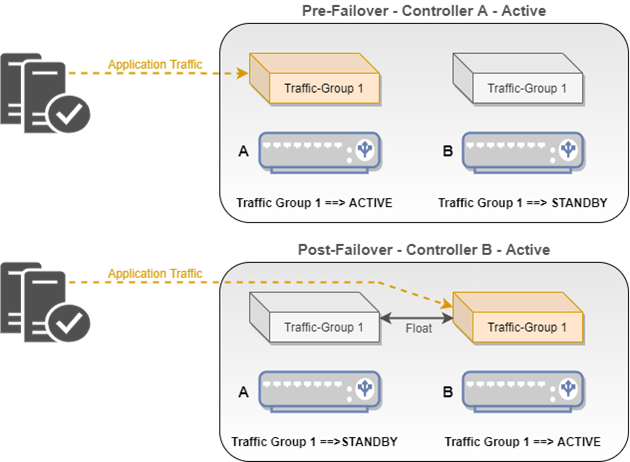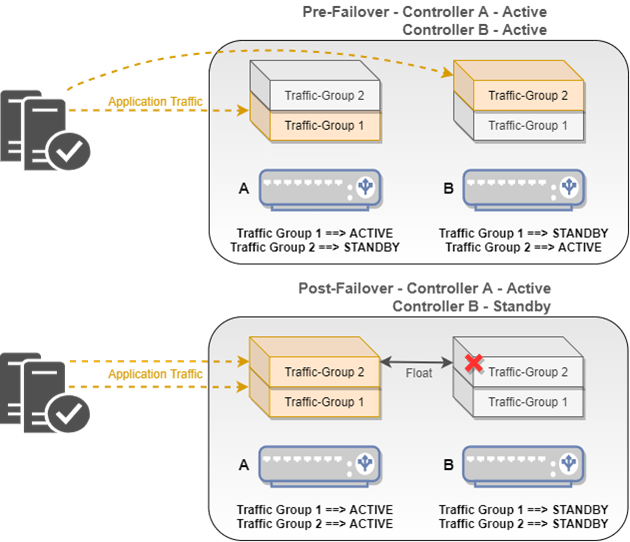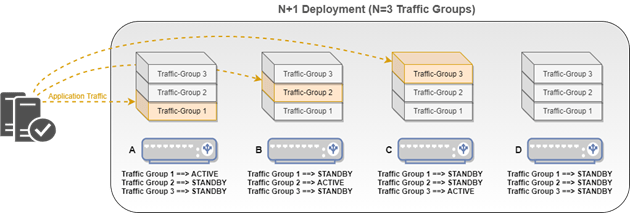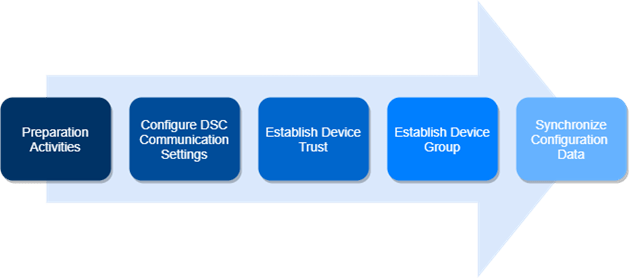As with many critical networks and IT infrastructure components, Load balancer systems can be deployed in High Availability (HA) configurations to support continuous application delivery without service interruptions over a long period of time. HA functions are provided by the Device Service Clustering (or DSC) feature. Several configuration options are offered, each with its advantages and challenges.
Introduction to Active/Standby Pairing
The Active/Standby pair is the most common deployments in DSC. Sometimes, referred to as a redundant pair, this option has been available in most of the earlier versions and before the availability of DSC in later versions. Although the underlying functionality and terminology have evolved since then, the basic concept is the same: one device is actively processing the traffic, the other is standing by in case the active system fails. An active-standby pair is easy to deploy and maintain and, if both systems have the same capacity, there is no issue with either system running the entire application delivery workload. One disadvantage is that, at any given point in time at least 50% of the device’s combined capacity is unused.

Introduction to Active/Active Pairing
The Active/Active pair differs from the ubiquitous active/standby pair in that, its design allows both devices to actively process application traffic at the same time. Application traffic is typically segmented into two groups, and each device is actively processing traffic for one of those groups. If one of the devices fails, its traffic processing is picked up by the other device.

The active/active pair is not as common a DSC deployment as the active standby pair, possibly because it requires more diligent capacity management and care must be taken to ensure that the combined workload never exceeds the capacity of ether device since during failover, a single device temporarily processes all traffic.
Introduction to N+1 deployment
In most of the load balancers. the underlying functionality that supports high availability changed with the introduction of the DSC feature. DSC permits more than just appear deployment scenario. Often referred to as N+1, DSC allows the placement of up to eight systems in a single device group for the purposes of providing failover protection. However, you could segment your application traffic into seven groups each active on a separate device with one device standing by in case of failure. Active/Standby and Active/Active pairs are also technically N+1 deployment, they are just 1+1.

You can segment your application delivery traffic into as many as 127 different traffic groups, all with failover protections managing a larger number of devices and traffic groups which may present administrative challenges, but there are benefits also, not the least of which is a better use of capacity. A device group is with 3 active and one standby device leaves just 25% unused capacity; 7 active and one standby leaves about 12% unused capacity; compared with 50% unused capacity in an active/standby or active/active pair.
Sync-Failover Device Groups
Whether Active/standby, Active/Active, or N+1, the common characteristic of these DSC deployments is that they are all device groups – more specifically, sync failover device groups, meaning they share common configuration data and may failover to one another in the event of an outage. As such, a system can only belong to one sync-failover device group at a time. The devices in a Sync-failover device group can be the same or homogeneous, meaning the same hardware and capacity, or they can vary based on your high availability requirements and business needs. The administration of a homogeneous device group is simpler than that of a device group with members with varying capacities. The latter requires significantly greater due diligence when it comes to workload separation, and weighting, and management of traffic groups, especially if you add more than two devices to the group.
Deploying a New High Availability Configuration
Most new DSC deployments start by placing two systems in an active/standby pair, which consists of the following major steps. These are summarized below end described in more details in the next series of lessons:

Preparation activities – Before deployment, you must perform certain preparation activities on each system, including configuring the devices to sit on your network, installing the same software versions, licensing and provisioning the name modules, and synchronizing the system clocks using NTP.
Configure DSC communication settings – You must define the local IP addresses on each system uses for various types of DSC communications.
Establish device Trust – Before devices will failover to one another, they must trust one another. Trust is established through the mutual exchanging of certain device certificates.
Establish a device group – With trust established, the two devices can be placed into the sync-failover device group for the purpose of high availability.
Synchronize configuration data – For a device group to work, all devices must share the same underlying application delivery configuration data, such as virtual servers, pools, nodes, and more. The initial ConfigSync operation ensures all devices start from a level playing field.
Purpose of this blog to introduce DSC deployment scenarios, so that when we will be discussing in the later part about Failover Communication methods and perform deployments activities, it would be easy to take it forward to clear the concepts.
Any planning for the deployment of DSC in the infrastructure like DC and enterprise networks would be greatly helpful to differentiate requirements from the customers. Zindagi Technologies is one such platform to provide DSC-based solutions having industrial experience of years. For any further inquiries or information, please feel free to reach out to us or call us at +919773973971.
Author
Rajat Goyal
Project Lead






